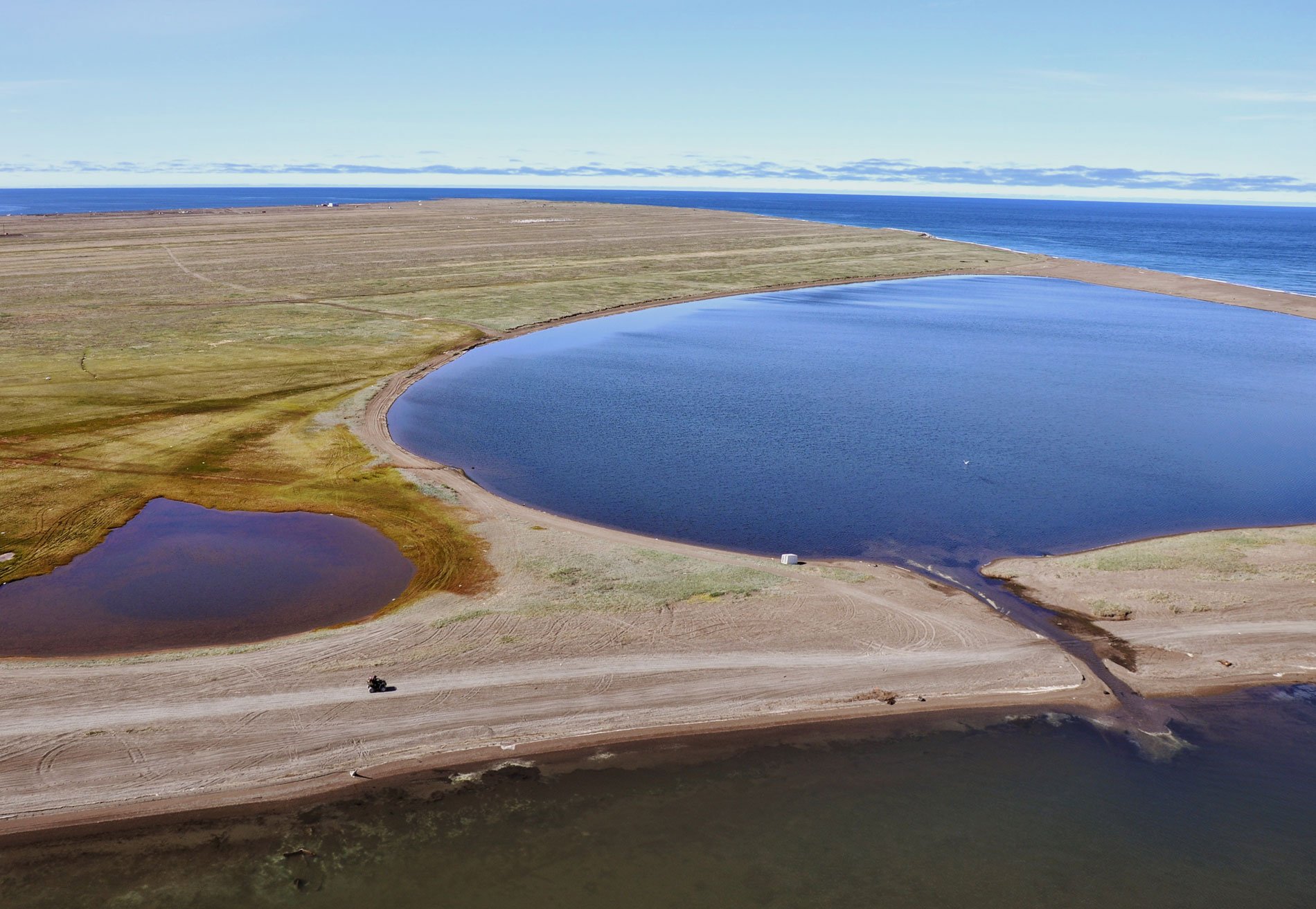Ipiutak is the Iñupiaq name for a prehistorical village that is now an archaeological site and National Historic Landmark on the Tigara Peninsula and the southern shore of Ipiutak Lagoon, about 133 miles (215 km) southwest of Point Lay and 1 mile (1.6 km) northwest of Point Hope, Alaska. The site and lagoon are named after the Ipiutak culture. The lagoon, or occasionally a saltwater lake, is 0.5 miles (0.8 km) across and intermittently connected to Marryat Inlet, a barrier-island lagoon and estuary of the Kukpuk River that starts at an elevation of roughly 2,092 feet (638 m) in the De Long Mountains of the western Brooks Range and flows generally west for 125 miles (202 km) to Marryat Inlet on the Chukchi Sea. Tikigaq Spit encloses several lagoons at the base of low but rugged cliffs on the western flank of the Lisburne Hills and together form Point Hope on the western tip of the Lisburne Peninsula. The gravel barrier beaches forming the spit are attached to blocks of permafrost-bound silt in the north and south. The beach ridge sequence across Point Hope represents variability in storm energy and sediment supplied by east-to-west bluff erosion on the south side, and onshore transport of shelf gravel by ice and waves on the north side.
During the Last Glacial Maximum, the westernmost extent of the Lisburne Peninsula formed the uplands of Beringia, a land mass now underwater that connected Asia to North America. This was the first land of the Americas occupied by humans; however, the earliest prehistorical sites found in Alaska were occupied somewhat later and have been assigned to the Paleo-arctic tradition. These people were succeeded by the Arctic small tool tradition, who continued to inhabit Alaska but also migrated east and became the first to occupy the Canadian Arctic and Greenland. The resulting widespread population developed differently. In Alaska, the Arctic small tool tradition developed into the Norton tradition while in the Eastern Arctic, it eventually became the Dorset culture. The Norton tradition lasted from 3,000 years ago until 1,000 years ago in some areas and is generally defined to include the Choris culture, the Norton culture, and the Ipiutak culture. Ipiutak is the most striking culture of the Norton tradition, suggested by artifacts collected from Point Hope that include elaborate inlaid ivory death masks, ivory carvings, dance pendants, and hunting implements, with artistic styles resembling those from Asia.
The Ipiutak culture arose possibly as early as 100 to 200 BC and collapsed around the year 800 AD and ranks among the most mysterious and intriguing traditions of the northern world. The Ipiutak site at Point Hope was discovered in 1939 by archaeologists Helge Larsen and Froelich Rainey. The site consists of nearly 600 abandoned house depressions along four beach ridges and a burial ground. The age of the house pits suggests that the village was occupied for 300 to 400 years, and about 125 to 200 people lived at the site during any one generation in 20 to 30 houses. Excavations in 1940 and 1941 produced artifacts from 74 driftwood-constructed houses and over 120 burials that are now archived at museums in Fairbanks, New York, and Copenhagen. A shipment of the finest artifacts was sent to the American Museum of Natural History in New York to be photographed for publication purposes. These materials were shipped back to the University of Alaska Museum in September 1946; however, the U.S. Army transport ship Brigadier General M.G. Zalinski sank in Grenville Channel, British Columbia, and the collection was lost. Read more here and here. Explore more of Ipiutak and Point Hope here:

